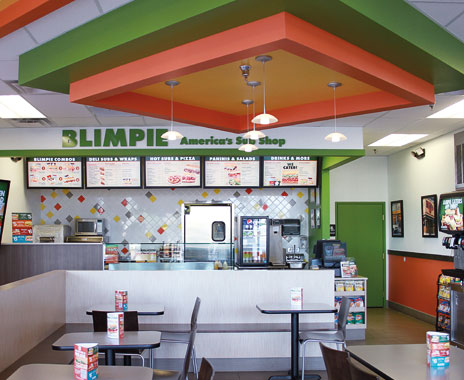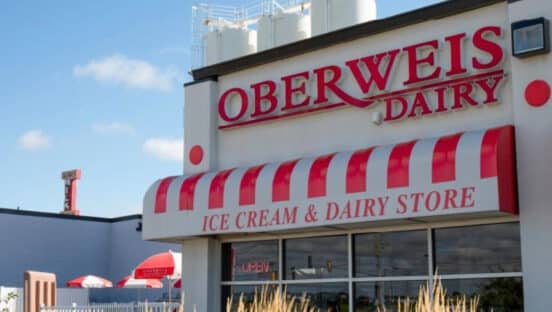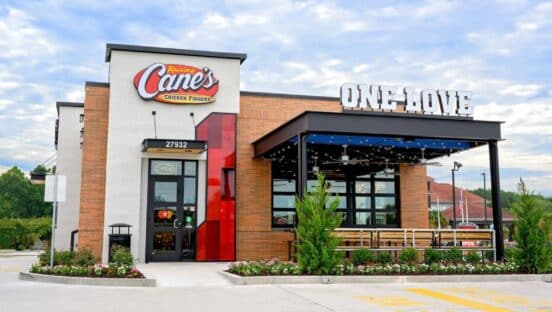Upholstered booths, a brighter color palette, a clean layout, carefully curated radio stations. These may all be components of an average restaurant redesign, but there’s more to them than meets the eye. In fact, design changes like these are often made with strategic and subtle purposes in mind.
As more limited-service restaurants go upscale and competition becomes stiffer by the day, brands are finding that embracing the psychology of design is key to enhancing the guest experience. In essence, restaurants that have for so along designed their core around taste are now appealing to consumers’ other senses—sight, hearing, smell, and touch—to influence behavior, increase customer satisfaction, and capture guest loyalty on a deeper level.
Sight
Taste may be the first sense that comes to mind in foodservice, but because the brain perceives sensual signals more quickly through the eyes than anywhere else, it’s sight that is one of the most important qualities when it comes to restaurant design.
Many a restaurant design begins with selecting a color palette, and though the colors chosen often match a brand’s logo and marketing materials, they’re also carefully selected to elicit specific emotions and actions from customers. Red and yellow, for example, are known to subconsciously trigger hunger and induce excitement, one possible reason why many brands—including McDonald’s, Wendy’s, Firehouse Subs, KFC, and Hardee’s—use the hues in their logos and stores. These bold, primary colors, especially when paired with bright lighting, can even encourage quick turnover in the unit—a particularly motivating factor for busy quick serves—while muted tones can create a leisurely atmosphere that keeps guests hanging around even after they’ve finished their meals, according to multiple design experts.
Orange represents wholesomeness and fruitfulness, the experts say, while it can also stimulate appetites and make a higher-priced product seem more reasonable. Green is frequently used by sandwich, salad, and better-for-you concepts, particularly because it symbolizes nature, freshness, and health.
“If you use green and you’re talking fresh, it reinforces that,” says Howland Blackiston, principal at King-Casey, a restaurant design firm that has worked with brands like Taco Bell, Popeyes, and Dunkin’ Donuts.
Though blue can make diners feel calm and relaxed, it’s often associated with spoiled or toxic food and can even suppress appetites, which means it’s a color not often incorporated in the foodservice sector. Neutral, earth-toned hues, meanwhile, are often used as a backdrop in many restaurants, as they promote comfort and familiarity. Research has even shown that customers consume larger amounts of product when dining in a room painted in a warm shade, thanks largely to the fact that it evokes a sense of intimacy and ease.
Playing off of the colors associated with two of its most popular sandwiches—the Turkey & Avocado Sandwich and the Pastrami Sandwich—Togo’s recently redesigned its units to feature avocado green and rich orange hues. “Those saturated food colors are predominant throughout our new design,” says Renae Scott, vice president of branding and marketing for Togo’s, adding that the shades evoke “crave” in customers.
But it’s not only colors than can have a visual influence on consumers’ perception of a brand and their behavior within a restaurant. Bright lighting, like that found in many quick-service restaurants, can enhance the speed of service and increase customer turnover—a useful strategy for quick-service brands that boost their revenue by getting as many customers through the door as possible, says Dennis Lombardi, executive vice president of foodservice strategies at consulting firm WD Partners. However, for fast-casual brands and concepts that aim to create a more luxurious atmosphere, dimmer lighting communicates to guests that they can stick around longer and enjoy themselves, he adds.
Sight lines are also important for both guests and management, Lombardi says, adding that allowing guests to get a glimpse of the back of the house while ordering can create theater, transparency, and freshness cues. “You need to have enough view to the back of the house so that it doesn’t look like you’re trying to hide something from the consumers,” he says.
A new layout in redesigned Blimpie stores capitalizes on these freshness and health cues via store layout, allowing consumers to watch as their items are crafted in front of them, says Bill Morris, owner of a revamped unit in Iowa. “We slice the meats directly in front of them, and then they can go and put on the fresh toppings right there and see everything that’s going on,” he says.
A new open-seating dining room also allows customers to feel a sense of community and that they’re part of the action, Morris adds.
“I want to create an atmosphere for them to feel welcomed in and not rushed out,” he says. “It’s more, come in, have lunch and dinner in a friendly atmosphere, and enjoy your time there, then carry on with your day.”
Sound
While sight plays a considerable role in influencing consumer behavior and perception, sound can have an effect on not only what and how much guests consume at a unit, but also what kind of demographic the brand attracts in the first place.
“It’s not only the level of noise, but also the type of noise,” Lombardi says. High-energy music, for example, will attract a younger demographic, while effectively keeping Boomers out of the store, he says.
Soft, medium-tempo music, on the other hand, has been found to encourage guests to not only stay in a restaurant longer, but also to consume more while there, according to some studies.
“It can be a cue to the right customer demographic, and it can also influence how fast tables turn,” Lombardi says. “High volumes of noise—to the point where it’s hard to hold a conversation—will move people out, but won’t necessarily make them happy as they’re moving out.”
Brands may not realize it, but the level of music and background noise can have a sizeable influence on consumers’ perception of the product and how much of it they consume. According to one 2011 study in the Journal of Food Quality and Preference, excessively loud background noise can even suppress saltiness, sweetness, and the overall enjoyment of food.
In addition, a recent study by researchers from universities in New York and Georgia showed that noisy environments, like those often found in quick-service restaurants, can encourage customers to overeat. Diners who ate at a restaurant with soft lighting and jazz music, as opposed to a restaurant with an identical menu but a brighter and louder environment, ate an average of nearly 175 fewer calories during their meal.
[pagebreak]
Smell
To a lesser extent, smell can also have an influence over the consumer perception of and experience at each restaurant unit. More specifically, it can be a notable contributor when encouraging consumers to spend and eat more at a restaurant.
“If you think about the smell of a Cinnabon outlet in an airport, as you walk by it’s like, ‘That smells good,’” Lombardi says. “It creates a craving, so it can be a very powerful motivator once you’re inside.”
Piping the scent of a key, high-profit-margin product or even LTO item into the dining room or order queue could even be a driving force in subconsciously pushing guests to order the item. “So let’s say you walk into a quick-serve restaurant and one of their specialties is blueberry muffins,” says Stanya LeMay, design principal at restaurant design firm Interior Systems. “You want to be able to smell that blueberry muffin in the morning.”
After acquiring West Coast bakery brand La Boulange, Starbucks announced it would begin baking breads and other bakery products in Starbucks stores, effectively changing the smell—and possibly the perception of the brand—within the store, while subtly influencing guests to try the new products and change their perception of Starbucks from a place for coffee to a breakfast and snack destination.
“What it might do is elevate the idea of breads and pastries in the way Starbucks customers perceive the offer of that category by having the smell of fresh-baked items in the stores,” Lombardi says. “But if you’re not baking at the store level, you’re not going to get that.”
Touch
Many brands are using a sense of touch—whether through plush seating, high-quality carpet, or wood tabletops—to create a more upscale, higher-end feel, making the unit more appealing to linger in for longer periods of time. “However, sometimes the operator’s strategic objectives may clash with the consumers’ objectives,” Blackiston says. “If you make them too comfortable, they’ll never leave.”
When it comes to seating, Lombardi says, it’s key to match the comfort level to the brand’s demographic and need for turnover. “If you’re an urban concept where locals tend to meet, you may want to have more comfortable seating,” he says. At a high-traffic unit, however, a restaurant may need to design seats that, though visually pleasing, become uncomfortable after a certain amount of time in order to increase customer turnover and revenue.
The quality of tables and tabletops requires special attention, too, as wood reads higher quality than metal and upholstered seats are perceived as more luxurious than plastic or fiberglass options. In addition, customers prefer carpet to hardwood floors, as it absorbs noise and has a better feel, Lombardi says. “Operators want hard floors because they’re easier to clean, but hard floors tend to show what debris is on the floor a lot quicker.”
Even tactile items like packaging can affect customers’ thoughts on product quality and their experience with the brand, says Jill Ahern, senior director of consulting services for Packaging Technology Integrated Solutions. “They touch it, they hear it, so the multi-sensory aspects of it are important,” she says.













